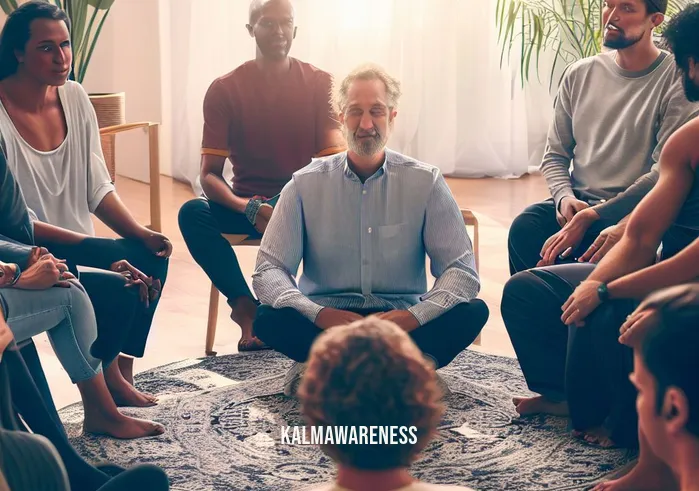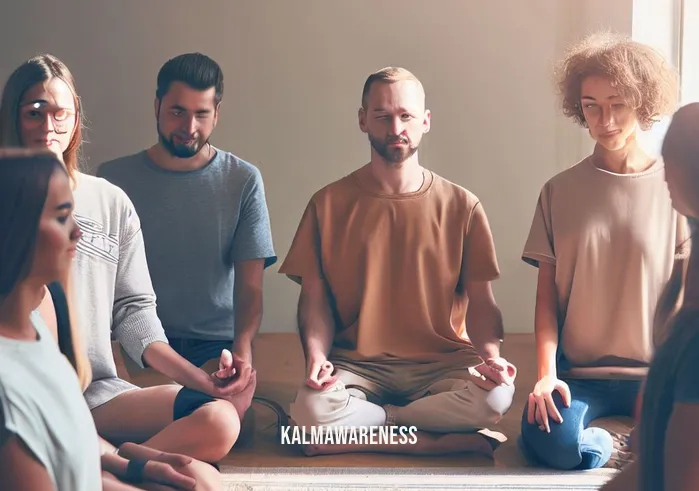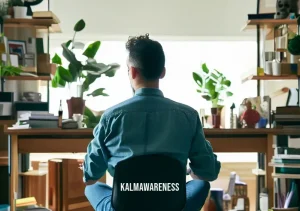Unlocking the Power of 12 Step Guided Meditation in Recovery
Recovery from addiction is a journey fraught with pitfalls, hurdles, and also new opportunities for growth. For many people, the Twelve-Step program provides a roadmap to sobriety and a new life. Yet, there’s a growing recognition that combining these traditional steps with meditation techniques can result in an even more powerful healing process. Enter the concept of 12 step guided meditation, a transformative practice that has aided countless individuals in their path toward sobriety and peace of mind. This modality is not just another fad; it’s a well-founded technique that taps into the intersection of Recovery and Meditation, Addiction Support, Twelve-Step Programs, and Mindfulness in Healing.
What Is 12 Step Guided Meditation?
So what exactly is a 12 step guided meditation? It is a structured meditation practice that often complements Twelve-Step Programs, acting as a bridge between mindfulness and the principles laid out in these recovery programs. Each of the twelve steps is often accompanied by a specific meditation, and these guided exercises can vary from focusing on breathing and meditation to more elaborate visualizations. The emphasis here is to help individuals become more aware of their thoughts, emotions, and actions, thereby giving them the tools to make more balanced decisions in their life.
Why Combine Meditation with Twelve-Step Programs?
Integrating meditation into a Twelve-Step program can offer unique advantages:
Enhanced Self-Awareness: The practice of meditation promotes a heightened sense of self-awareness, which is crucial for anyone in the recovery process.
Emotional Regulation: Mindfulness techniques can help individuals better manage their emotional responses, reducing impulsivity which is often a trigger for relapse.
Spiritual Development: Many people find that their journey of recovery is also a spiritual one, and meditation offers a platform for exploring this aspect in a non-denominational way.
Stress Reduction: Stress is a common factor in substance abuse and relapse; meditation offers a way to manage this stress effectively.
In the realm of Addiction Support, the combination of Twelve-Step Programs and meditation techniques is becoming increasingly popular for these very reasons.
The Role of Breathing in 12 Step Guided Meditation
Breathing is the cornerstone of any meditation practice, and this holds true for 12 step guided meditation as well. When you learn how to control your breath, you learn how to control your mind, which is a critical asset for anyone in recovery. Controlled breathing not only helps to quiet the mind but also has physiological benefits like lowered blood pressure and reduced stress levels.
“Breathing in deeply to bring your mind home to your body is the first step of meditation.”
- Thich Nhat Hanh
Preparing for 12 Step Guided Meditation
Before you start your 12 step guided meditation practice, there are a few things you should prepare:
Quiet Space: Choose a quiet, comfortable space where you won’t be disturbed.
Time: Initially, aim for shorter sessions—perhaps 10 to 15 minutes—and gradually increase the time as you become more comfortable.
Focus: While your focus will be guided by the meditation itself, it’s important to go into the session with an open and focused mind.
Next Steps
The power of 12 step guided meditation in the journey toward recovery and sobriety is immense, and the synergy it creates with Twelve-Step Programs is worthy of deeper exploration.
We’ve introduced you to what 12 step guided meditation is and why it’s important, especially for those on the road to recovery. In the next chapter, we’ll dive into the practical aspects of incorporating this form of meditation into your Twelve-Step Program—how to get started, what to expect, and how to measure your progress. Until then, take some time to ponder the possibility of a more balanced, mindful life, complementing your journey toward recovery and sobriety. Your road to recovery could become a more enriching experience by weaving in this transformative practice.
So, are you ready to take the next step in your healing journey? Continue reading to explore further.

The Anatomy of a Successful 12 Step Guided Meditation Practice
Now that we’ve laid the groundwork for understanding the transformative power of 12 step guided meditation, let’s explore the details that make this practice a cornerstone of effective recovery. Here, we’ll delve into the individual components that make this modality unique, and offer practical guidelines, lists, and a table to help you get started or deepen your practice.
Components of 12 Step Guided Meditation
The effectiveness of 12 step guided meditation hinges on its multi-faceted approach to well-being. Typically, these are the key components:
- Mantras: These are affirmations or phrases aligned with each step to help focus your thoughts.
- Breathing Techniques: Controlled breathing is the cornerstone that helps in grounding you.
- Visualizations: Imagery often accompanies the meditation to enhance emotional and mental clarity.
- Mindfulness Practices: Present moment awareness practices to detach from compulsive thoughts or cravings.
- Silent Reflection: Time set aside for silent introspection, often following a guided section.
The Synergy of Sobriety Meditation and 12 Step Programs
One cannot overemphasize the importance of combining Twelve-Step Programs with sobriety meditation. This synthesis leverages the proven structure of Twelve-Step Programs while incorporating the emotional regulation and mental clarity that meditation offers. This merger creates a holistic recovery route that not only addresses the symptoms but also the underlying emotional and mental triggers.
Table: Comparison of Traditional Twelve-Step Programs and 12 Step Guided Meditation
| Feature | Twelve-Step Programs | 12 Step Guided Meditation |
|---|---|---|
| Focus | Behavioral Change | Emotional and Mental Clarity |
| Methods | Group Meetings, Sponsorship | Controlled Breathing, Mantras, Visualization |
| Goal | Sobriety, Accountability | Sobriety, Inner Peace, Self-awareness |
| Time Commitment | Varies, Long-term | Short Sessions, Can be integrated into existing Programs |
| Spiritual Component | Higher Power Concept | Mindfulness, Non-Denominational Spiritual Exploration |
Tailoring Your 12 Step Guided Meditation
The beauty of 12 step guided meditation lies in its adaptability. While there are specific guided sessions aimed at each of the twelve steps, you can tailor your practice according to your needs. Here are some tips:
- Start Simple: Don’t overcomplicate. Begin with 5-10 minute sessions.
- Customize Mantras: Feel free to create your own affirmations that resonate with you.
- Select Your Space: It can be indoors or in nature, just ensure it’s free from distractions.
- Seek Guidance: When in doubt, consult with experienced meditation instructors who are familiar with recovery programs.
- Consistency is Key: Regular practice enhances the benefits over time.
Next Steps on Your Journey
As you consider integrating 12 step guided meditation into your recovery journey, recognize that this isn’t just an ‘add-on’, but a practice that can fundamentally reshape your path towards sobriety and mental peace. Incorporating the mindfulness techniques, affirmations, and breathing exercises can complement and amplify the effectiveness of traditional recovery programs.
What’s up next? In the following chapter, we’ll dive into some real-world case studies, highlighting the successes and challenges individuals have faced when incorporating 12 step guided meditation into their recovery programs. We’ll also explore resources that can help you establish a consistent practice. So if you’re keen on adding another layer of effectiveness to your path toward sobriety, continue reading to discover the power of lived experiences and practical resources in enhancing your 12 step guided meditation practice.

From Practice to Transformation: Stories of Hope Through 12 Step Guided Meditation
Having dissected the anatomy of a successful 12 step guided meditation practice, you may be curious about its real-world impact. After all, understanding a practice is one thing; witnessing its transformative power is another. This chapter focuses on the inspiration and hope that 12 step guided meditation can bring to your recovery journey. Let’s explore stories that epitomize resilience, underscore the relevance of this practice, and offer hope that you, too, can navigate the challenges of recovery.
The Transformative Power of Mindfulness in Healing
“The best way to capture moments is to pay attention. This is how we cultivate mindfulness.”
- Jon Kabat-Zinn
Indeed, mindfulness can serve as a potent ally in the journey of recovery. Coupling mindfulness with Twelve-Step Programs offers a comprehensive strategy that addresses not just the body but also the mind and spirit. The practice of 12 step guided meditation brings an added layer of mindfulness in healing, effectively augmenting the recovery process by giving individuals the tools to navigate emotional upheaval and cravings.
Stories That Inspire
“Your wound is probably not your fault, but your healing is your responsibility.”
- Denice Frohman
Let’s delve into brief accounts of individuals who have significantly benefited from this integrative approach.
Anna: A mother of two, Anna struggled with alcoholism. She started incorporating 12 step guided meditation in her recovery program. It provided her a level of emotional regulation she never thought possible, eventually leading her to two years of sobriety.
Mike: Dealing with an opioid addiction, Mike found that traditional programs alone didn’t help him manage his anxiety, a significant trigger for his substance abuse. 12 step guided meditation offered him the coping mechanisms to handle his anxiety and cravings.
Sonia: A young woman who felt spiritually empty found hope through the spiritual component that this meditative approach added to her Twelve-Step Program. It helped her find a greater purpose and stay committed to her recovery.
“Healing takes courage, and we all have courage, even if we have to dig a little to find it.”
- Tori Amos
Building a Community Around Sobriety Meditation
Sobriety meditation, a synonym for our central theme of 12 step guided meditation, is not just an individual effort but can also be a community endeavor. Many recovery centers and online platforms are adopting this practice, enabling individuals to share experiences and learn from each other. The sense of community strengthens the resolve to continue on the path of recovery and healing.
“Alone we can do so little; together we can do so much.”
- Helen Keller
The Road Ahead: Your Path to Transformation
Just as every individual is unique, so is every journey through recovery. The incorporation of 12 step guided meditation offers a holistic approach that can be tailored to individual needs. If stories of transformation and community inspire you, imagine what this practice can do for your journey.
What’s Next?
The evidence of the transformative power of 12 step guided meditation is compelling. But, how can you integrate it seamlessly into your existing recovery program? That’s what we’ll explore in the next chapter. We’ll provide actionable steps, checklists, and pointers to help you set up and maintain a consistent 12 step guided meditation practice. Are you ready to take the next transformative step in your journey? Continue reading to equip yourself with practical tools for a life-changing experience.

The Blueprint for a Robust 12 Step Guided Meditation Practice
So far, we’ve taken an extensive look at the essence, benefits, and real-world effectiveness of 12 step guided meditation. Armed with this knowledge and inspired by personal stories of transformation, the next logical step is to map out your own journey. In this chapter, we’ll dissect the specifics of setting up a comprehensive 12 step guided meditation practice, using detailed bullet points and lists to ensure you have all the tools for success.
Core Elements of an Effective 12 Step Guided Meditation Practice
Let’s break down the core elements that make a 12 step guided meditation practice both efficient and impactful:
Start Point: Identify your current step in the Twelve-Step Program. Tailor your meditation to match this step.
Time Commitment: Decide how much time you can realistically dedicate to this practice daily or weekly. Even 5-10 minutes can be effective.
Resource Allocation: Pinpoint the resources you’ll need—guided audio tracks, a peaceful space, or perhaps even a mentor.
Structured Plan: Lay out a roadmap with actionable milestones, incorporating both your Twelve-Step Program and meditation sessions.
Navigating the Twelve Steps with Guided Sessions
If you’re familiar with Twelve-Step Programs, you know each step has a specific focus. Here’s how you can pair each step with a corresponding meditation theme:
- Admitting Powerlessness: Meditation focus on acceptance and surrender.
- Belief in a Greater Power: Focus on open-mindedness and spiritual connection.
- Decision to Turn Over Control: Cultivate the mindset of release and trust.
- Taking Inventory: Meditate on self-awareness and honesty.
- Admitting Wrongs: Focus on humility and transparency.
- Willingness to Change: Meditate on adaptability and growth.
- Humbly Asking: Concentrate on vulnerability and request.
- Making a List: Meditate on acknowledging wrongs and preparing for amends.
- Making Amends: Focus on courage and forgiveness.
- Continued Inventory: Meditate on ongoing self-assessment and correction.
- Improving Connection: Focus on deepening spiritual practice and understanding.
- Service and Practice: Meditate on gratitude and giving back.
A Guide to Sobriety Meditation Techniques
Sobriety meditation, another term synonymous with 12 step guided meditation, involves various techniques. Choose the ones that resonate with you the most:
- Breathing Techniques: Simple yet effective for grounding your thoughts.
- Mantra Meditation: Using affirmations relevant to your current step.
- Body Scan: Great for physical awareness and releasing tension.
- Loving-Kindness Meditation: Effective for developing compassion and forgiveness, essential in the later steps of the program.
The Importance of Consistency and Adaptability
Consistency is key when it comes to effective recovery through meditation. While setting a structure is important, life is often unpredictable. Adaptability within the framework of your 12 step guided meditation practice can be a real asset.
Routine vs Flexibility: Stick to a routine but be prepared to adapt as life events unfold.
Progress Tracking: Keep a meditation journal or use an app to track your progress.
Adjusting Techniques: Don’t be afraid to switch techniques if you find something isn’t working for you.
What Awaits You in the Final Chapter
We’ve covered the nuts and bolts of setting up a sustainable and effective 12 step guided meditation practice. However, a blueprint is only as good as its execution. In the final chapter, we’ll explore how to bring your plan to life, the pitfalls to avoid, and how to measure the real-world impact of your meditation practice on your road to recovery and sobriety.
Are you ready to turn your blueprint into a lived reality? Continue reading to embark on the most transformative journey of your life.

The Journey Ahead: Cultivating a Life of Recovery and Mindfulness Through 12 Step Guided Meditation
Here we are, at the conclusion of our exploratory journey on 12 step guided meditation. If you’ve made it this far, chances are you’re earnest about incorporating this valuable practice into your life, particularly if you’re walking the road of recovery. From breaking down what 12 step guided meditation entails, to its benefits, real-world impact, and practical implementation, we’ve covered considerable ground. But remember, this is not the end; it’s the beginning of a transformative journey toward recovery and inner peace.
The Takeaway: More Than Just Meditation
By now, it should be crystal clear how critical 12 step guided meditation can be for anyone involved in a Twelve-Step Program. This isn’t just about adding a meditative element to your life; it’s about fundamentally changing how you approach recovery. It’s about creating a synergy that enables both mindfulness in healing and a structured path to sobriety. In other words, this practice is an essential tool for holistic healing—mentally, emotionally, and spiritually.
The Gift of Transformation
“The only way to make sense out of change is to plunge into it, move with it, and join the dance.”
- Alan Watts
When you embrace 12 step guided meditation, you’re not just following a trend. You are joining a transformative dance—a dance that weaves mindfulness and recovery into an intricate tapestry of change and growth. Imagine starting every day with a session that helps you recenter, followed by the motivation of a Twelve-Step meeting, and closing the day with a reflection that enhances emotional regulation. This is the reality that awaits you.
Gratitude and Acknowledgment
Thank you for dedicating the time to explore this enriching topic with us. It speaks to your commitment not only to your own recovery and personal development but also to the wider mission of advocating for more effective, holistic approaches to healing and sobriety. We look forward to bringing you more content that’s as enriching as what we’ve explored here.
Your Next Steps
- Action Plan: Start with a simple 5-minute meditation, and work your way up.
- Consult Resources: You can find more in-depth articles and guides on our magazine to deepen your understanding.
- Community: Join online forums or local groups dedicated to sobriety meditation.
- Revisit: Feel free to revisit previous chapters for a refresher on how to implement and adapt your 12 step guided meditation practice.
Until Next Time
Whether you’re at the beginning of your recovery journey or years into it, 12 step guided meditation offers a renewed perspective and a toolset that complements traditional methods. As you look to the future, consider this practice as a lifelong companion that adapts to your changing needs and challenges.
So, are you ready to take on the next chapter in your life? Dive deeper into our magazine for more enlightening content, or revisit the preceding sections for a comprehensive refresher. Remember, this is a journey, and every step you take in incorporating 12 step guided meditation makes the path ahead a little brighter.
Thank you for being part of this enriching dialogue. Until the next enlightening journey, take care, and may your path be filled with wisdom, recovery, and above all, peace.




